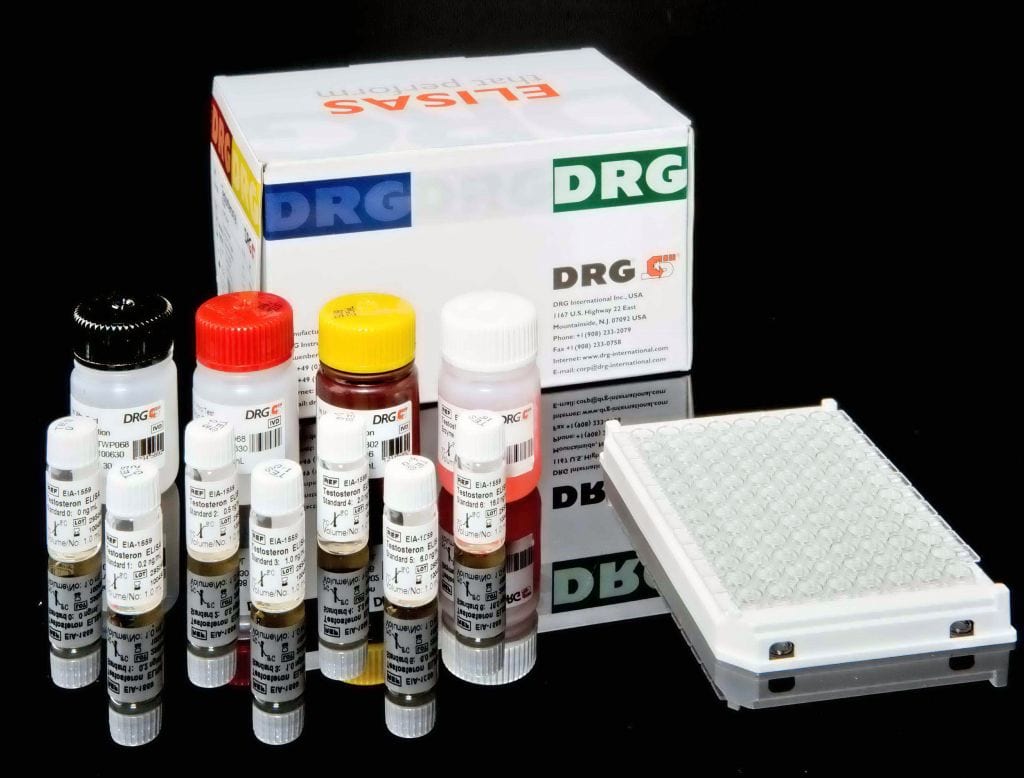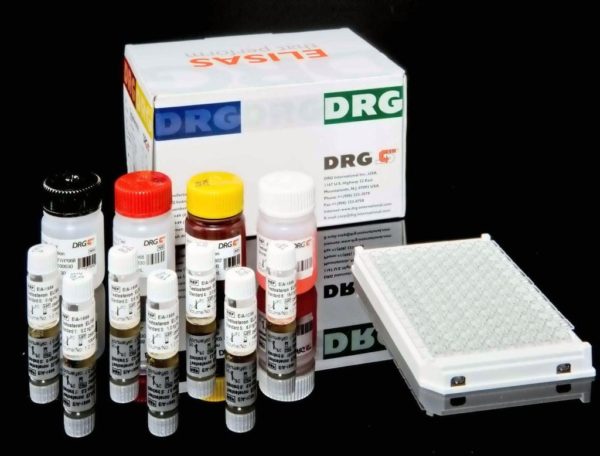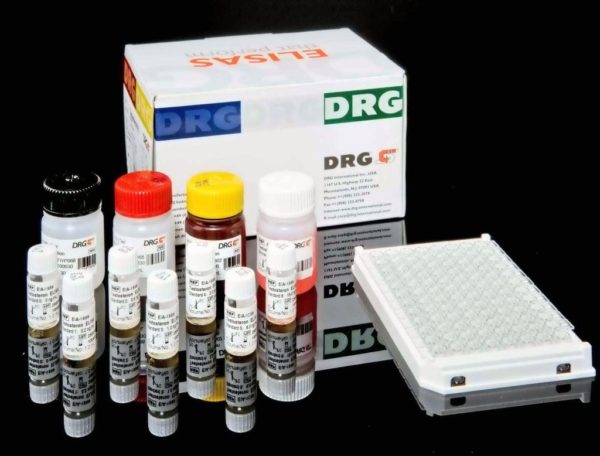Description
An enzyme immunoassay for the qualitative and semiquantitative determination of IgA-class antibodies to Mycoplasma hominis in serum and plasma.
Mycoplasma hominis is a strain of bacteria present in the vagina. It is one of the many organisms that may cause pelvic inflammatory disease (PID) in women. PID comprises a spectrum of inflammatory disorders of the upper genital tract among women and may include any combination of endometritis, salpingitis, tubo-ovarian abscess, and/or pelvic peritonitis. Especially measurement of M.hominis IgA is useful to detect acute phase.
The DRG Mycoplasma hominis IgA ELISA Kit is a solid phase enzyme-linked immunosorbent assay (ELISA). Patient samples are diluted with Sample Diluent and additionally incubated with IgG-RF-Sorbent, containing hyper-immune anti-human IgG-class antibody to eliminate competitive inhibition from specific IgG and to remove rheumatoid factors. This pretreatment avoids false negative or false positive results.Microtiter wells as a solid phase are coated with Mycoplasma hominis surface antigen p120. Diluted patient specimens and ready-for-use controls are pipetted into these wells. During incubation Mycoplasma hominis-specific antibodies of positive specimens and controls are bound to the immobilized antigens. After a washing step to remove unbound sample and control material horseradish peroxidase conjugated anti-human IgA antibodies are dispensed into the wells. During a second incubation this anti_IgA conjugate binds specifically to IgA antibodies resulting in the formation of enzyme-linked immune complexes. After a second washing step to remove unbound conjugate the immune complexes formed (in case of positive results) are detected by incubation with TMB substrate and development of a blue color. The blue color turns into yellow by stopping the enzymatic indicator reaction with sulfuric acid. The intensity of this color is directly proportional to the amount of Mycoplasma hominis-specific IgA antibody in the patient specimen. Absorbance at 450 nm is read using an ELISA microtiter plate reader.




